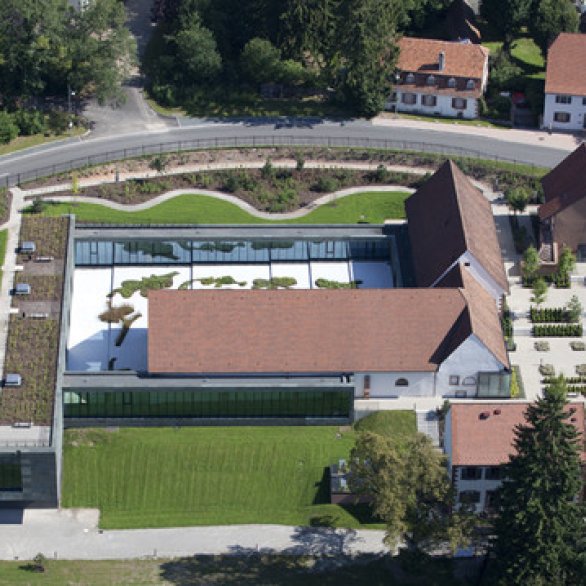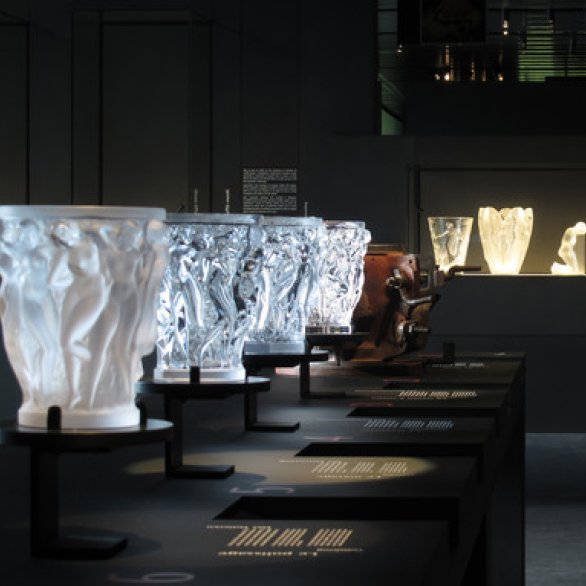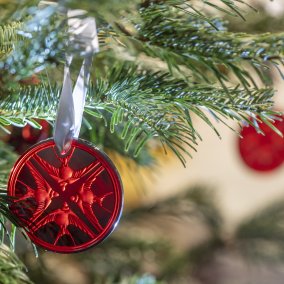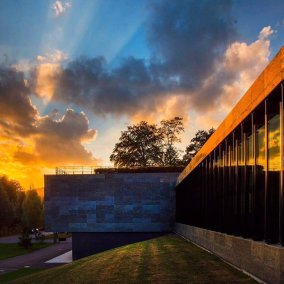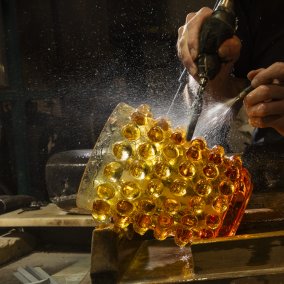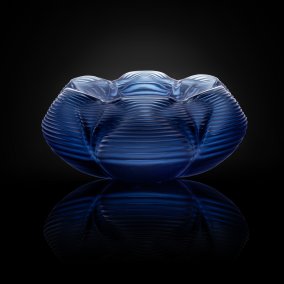Jewellery
The works presented bear witness to René Lalique's creative genius. As a jeweller when he first started out, he brought a fresh look to bear on jewellery, whether in terms of sources of inspiration or the materials used. So he did not baulk at employing materials considered less worthy, such as horn, ivory or enamel. In fact, it was his research work on the latter material that sparked Lalique's interest in glass, which is very similar in composition. 1900 marked the apotheosis of René Lalique's career as a jeweller. It was also the year of the Universal Exhibition in Paris where he had a stand. Join the crowds and explore this event at the museum thanks to a large format video.
Drawings
René Lalique drew a great deal and he drew well. Through the studious eye of the artist, the jewellery came to life on the page. Original works are presented in the museum's graphics room. The constraints of conservation – to preserve the colours – require four rotations per year.
Perfume bottles
The perfume bottles, created subsequent to René Lalique's meeting with François Coty, mark the artist's definitive change from jewellery to glass. The visitor has the great good fortune to be able to admire the museum's collection of more than 230 perfume bottles loaned by Silvio Denz, a great collector and Managing Director and owner of the Lalique Company.
Glass
After taking his first steps into this material with the perfume bottles, René Lalique diversified his output. Tableware, decorative objects, chandeliers and vases were added to his catalogue. At the Exhibition of Industrial and Decorative Arts in Paris in 1925, René Lalique began to think big and presented monumental works, such as the Fountain, Les sources de la France. Devotional art may be a lesser known aspect of Lalique's creative output, which you can discover thanks to a film produced in churches in Douvres-la-Délivrande, Rheims, Paris and Jersey.
Lalique crystal
The know-how continues today in Wingen-sur-Moder. When René Lalique passed away, it was his son Marc who took up the reins. He made his own mark on the company by initiating the change from glass to crystal, which interested him for the way it played with light. His daughter Marie-Claude then took over in the 1970s. Since 2008, the Lalique Company has been part of the Swiss group, Art et Fragrance, which belongs to Silvio Denz.
A multi-touch table at the museum demonstrates the various stages in the manufacture of the Bacchantes vase and a multi-screen wall pays homage to the glassmakers working in the factory (please note that it is not possible to tour the factory!).
